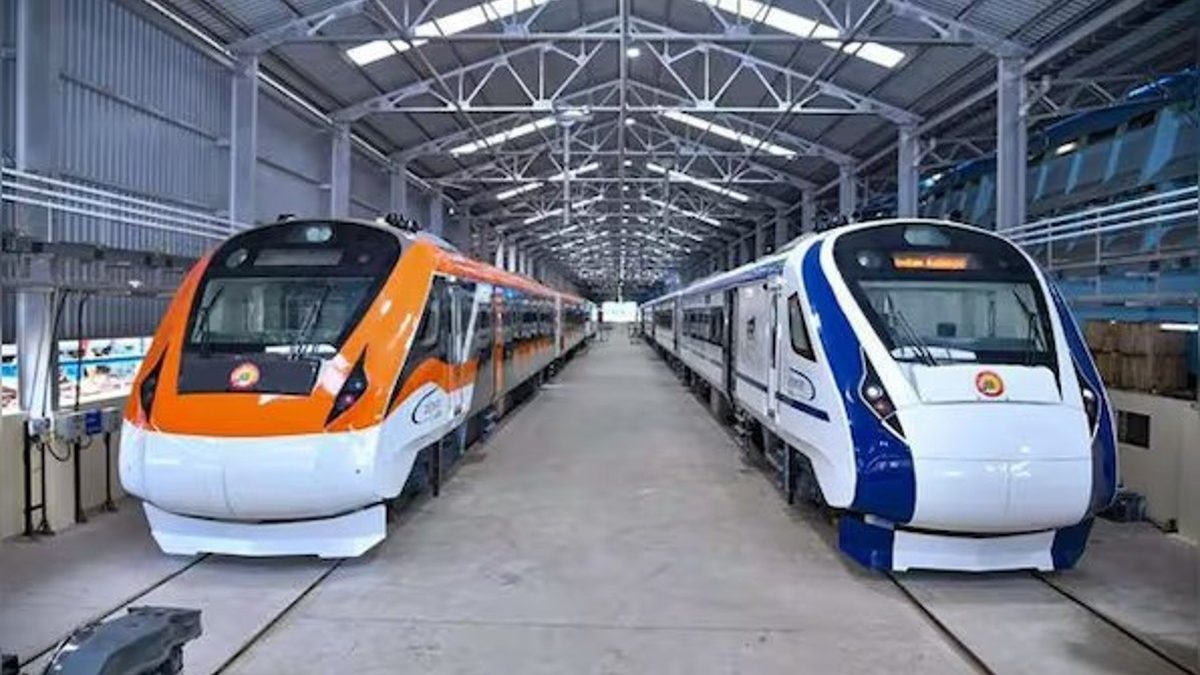The Union Budget for FY26, presented on February 1, has left Indian Railways grappling with unmet expectations. Despite previous years of consistent growth and rising freight volumes, the budgetary allocation for Indian Railways has remained stagnant at Rs 2.55 lakh crore. This figure mirrors the allocation from the previous fiscal year (FY25) against expectations that the sector would get an investment boost in Union Budget 2025-26 .
**Click here for LIVE updates on Union Budget 2025**Stagnant allocation amid growing needs
According to Moneycontrol, the Union government had allocated Rs 2.55 lakh crore in 2024-25 as the gross budgetary support for Indian Railways, marking a 5 per cent increase from Rs 2.40 lakh crore in FY24. This increase was welcomed as a sign of the government’s commitment to enhancing railway infrastructure.
However, in FY26, there is no rise in the allocation, leaving the sector to tackle its challenges with the same resources as last year. The railway sector had anticipated a significant jump in funding to match the growing demands of freight and passenger traffic, but the stagnation presents a challenge.
Achievements of Indian Railways in FY 2023-24
Despite the lack of additional budgetary support, Indian Railways has made remarkable strides. In FY 2023-24, the Railways achieved an all-time high in freight loading reaching 1,588 million tonnes (MT), up from 1,095 MT in FY 2014-15.
Impact Shorts
More ShortsMoreover, total receipts for Indian Railways crossed Rs 2.56 lakh crore in FY 2023-24, marking an exceptional revenue performance. Net revenue also rose to Rs 3,260 crore, underscoring the financial health of the sector despite challenges.
Budgetary expectations and stock market reactions
According to a Times of India report, analysts had initially expected a 15-20 per cent increase in the capital expenditure (Capex) for Indian Railways in FY26. Such an increase would have been vital for maintaining the momentum of infrastructure projects, including track laying, electrification and the introduction of new trains.
However, the unchanged allocation has led to disappointment across the sector. Stocks of railway-linked companies such as IRFC, RVNL, IRCON International and IRCTC Ltd saw sharp declines following the announcement.
For instance, IRFC shares dropped over 5 per cent, while RVNL and IRCON saw losses exceeding 6 per cent. This market response highlights the sector’s disappointment with the stagnant budget.
Capex spending and sector-specific focus
The railway ministry has reiterated that a significant portion of the allocated budget will be directed towards safety measures, electrification and infrastructure development. The unchanged budget allocation has been earmarked primarily for building tracks, wagons, stations and improving signalling systems.
However, with growing freight and passenger demands, the sector has expressed concerns about whether the current allocation will be sufficient to meet its long-term goals.
Lack of major reforms
Another area of concern is the absence of any major reforms in the railway sector in the FY26 budget. Last year’s budget had promised new Vande Bharat trains and introduced plans for three major economic corridors, including an energy corridor, port connectivity and a high-traffic density corridor.
The lack of similar announcements this year has raised questions about the government’s commitment to long-term railway infrastructure reform. Additionally, the ministry’s Internal and Extra-Budgetary Resources (IEBR), which includes funds raised through financing sources such as IRFC, has also remained unchanged, further limiting the flexibility in funding large-scale projects, CNBC-TV18 reported.
Expectations for the future and immediate impacts
While the unchanged budgetary allocation for FY26 is disappointing, Indian Railways continues to be an essential backbone of India’s transportation infrastructure. The railways play a crucial role in freight transportation and the movement of passengers across vast distances making any delay in infrastructure modernisation a critical issue.
A lack of substantial investment in Indian Railways could impede future growth, especially considering the government’s ambitious goal of achieving a freight target of 3,000 MT by 2030.
The sharp decline in railway stocks post-budget is a reflection of investor uncertainty, particularly as no major reforms or increased funding were announced for the sector. Indian Railways needs an infusion of funds to ensure that projects like electrification, gauge conversion and the development of high-speed trains continue without interruption.
Tough road for Indian Railways
The Union Budget’s flat allocation for Indian Railways in FY26 reflects both the sector’s successes and its challenges. While it continues to achieve record performance in terms of freight loading and revenue generation, the unchanged funding signals potential strain on its infrastructure.
Moving forward, Indian Railways will need to focus on improving efficiency with the available resources, while stakeholders hope for more robust funding and reform in subsequent budgets to meet the sector’s long-term development goals.


)

)
)
)
)
)
)
)
)



